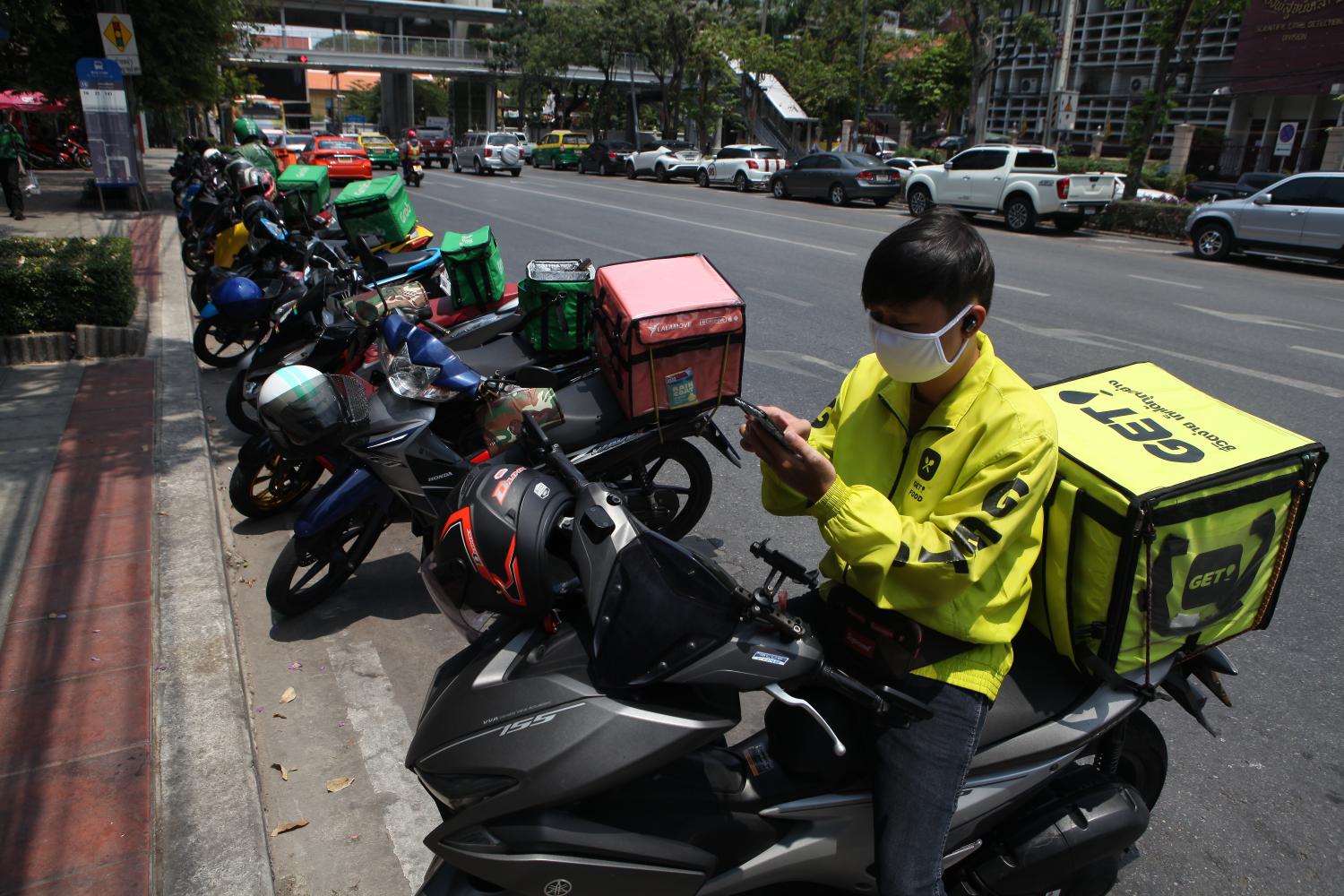
While still in its nascent stage, the food delivery and grocery delivery market in Thailand is growing rapidly. Over the medium term, the country will offer an attractive demographic profile, combined with an increasing number of middle- to upper-income households who largely reside in the major cities.
Additionally, all mobile phone users are expected to have access to the internet by 2024, further increasing the attractiveness of the market. The operational risk environment is also suitable for a delivery company, despite shortcomings in cybersecurity.
However, recent government regulations and guidelines for the food delivery market signal that future regulation of the sector may make it more difficult to operate.
The food delivery market in Thailand has seen impressive growth over the past year, with a surge in orders amid the lockdown and movement restrictions over the first half during the Covid-19 pandemic.
The market is dominated by four main players: GrabFood, Foodpanda, Get and Line Man. All the major players used this pandemic period to undertake massive capital investment, while expanding into new provinces and investing in their own cloud kitchens to tap high demand. However, none has yet made a profit, combining for a net loss of approximately 4.2 billion baht (US$130 million).
The key to remaining successful over the medium term is to rapidly expand their footprint, particularly beyond Bangkok, as well as expand their food offerings. Cloud kitchens are seen as a key because they centralise a number of different food types, often in cheaper locations, where delivery costs can be kept low.
The ideal target market for e-commerce majors is middle- to high-income urban consumers who are generally pressed for time and have the disposable income to pay a premium for home delivery options.
Some 51.4% of the Thai population lives in an urban setting. These households are mostly concentrated in a few cities, with Bangkok home to more than 10 million.
Over the medium term, Thailand will increasingly develop an attractive household income profile compared with other regional markets. The average disposable income in the country is currently $9,900 a year, almost double Vietnam's average of $4,800. About 33%, or 9.1 million, of Thai households have a disposable income between $10,000 and $25,000. By 2024, rapid income growth will see this share increase to 48.1%.
EASY TARGETS
The main opportunities for e-commerce majors exist at the top end of the income scale. These households are predominantly located in a few suburbs of major urban centres, making them easy to target. By 2024, 5% (or 1.5 million households) will have a disposable income of more than $25,000.
Mobile phone penetration in Thailand is high, at 134% in 2020. The vast majority of these phones have access to the internet, with 15.5% having a 3G subscription and 82.8% connected to 4G. By 2024, our telecoms analysts predict all mobile users will have access to at least a 3G/4G connection, with 25% having a 5G connection.
As Thai consumers continue to embrace online shopping and e-commerce, they're increasingly using their phones to order and buy goods. Consequently, reaching and marketing to these consumers will be paramount to the success of food delivery platforms.
Our operational risk team highlights three main areas that delivery companies need to consider: logistics network, labour supply and cybersecurity.
Thailand has one of the stronger transport networks in the East and Southeast Asia region. Its well-developed road network boosts the competitiveness of land-based supply chains because of strong connectivity offered across the country's main economic hubs.
The country also has a high workforce participation rate for men and women, which boosts the size of the labour pool available for businesses. This will be increasingly important for delivery companies, which need an ample supply of drivers.
PAYMENT SECURITY
That being said, Thailand's exposure to cybercrime and cyberwarfare risks is increasing as the population is becoming more connected to the internet and more reliant on online services for daily activities, while security infrastructure lags. This is of concern for e-commerce and food delivery platforms, who rely on internet payment platforms, as it exposes transactions to the risk of fraud.
While the internet security infrastructure in Thailand has improved significantly over the past five years, from 69 secure servers per 1 million people in 2015 to 1,404 in 2019 (latest available data), it still lags regional peers such as Malaysia, (6,724 secure servers per 1 million people).
This indicates the bulk of Thailand's online activity, including many sensitive financial and commercial transactions, take place without the use of encryption technology. This creates potential opportunities for cybercriminals, undermining the country's potential attractiveness as a destination for e-commerce.
In June 2020, the cabinet approved measures to regulate food and online delivery services after complaints about price surges during the lockdown. Price controls came into force in July and will be reviewed annually. The Trade Competition Commission published guidelines on unfair trade practices between online food delivery service providers and restaurant operators.
The guidelines aim to regulate any unfair acts by online delivery providers, such as the setting of commission fees, advertising and promotion fees, delayed credit terms, and refusal to deal. The guidelines signal that regulation of the sector could become stricter.
This commentary by Fitch Solutions is not a comment on Fitch Ratings' credit ratings. Fitch Ratings analysts do not share data or information with Fitch Solutions Macro Research.